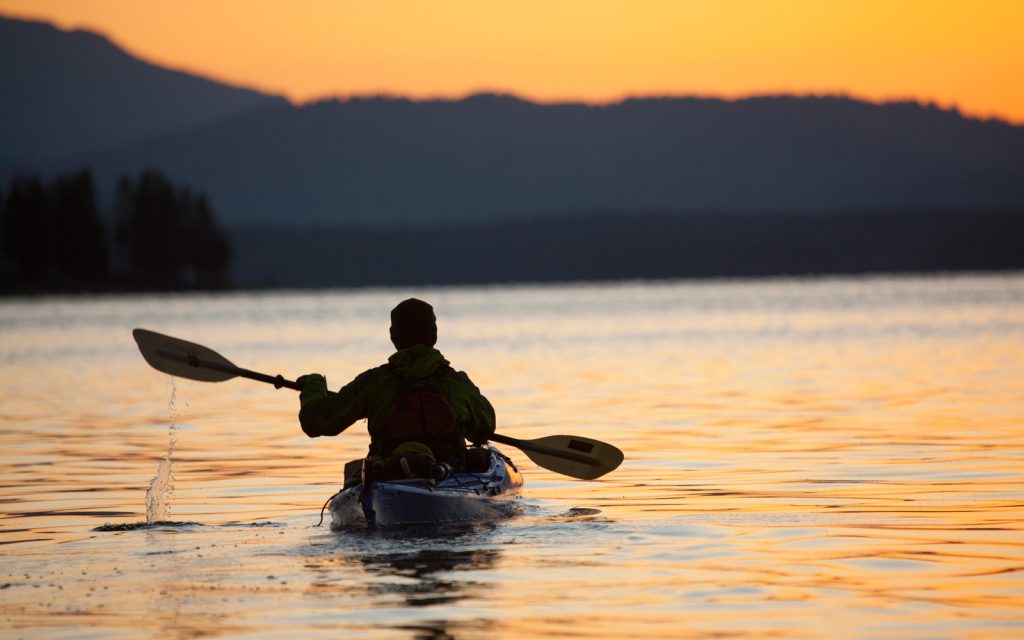
The first thought that comes on top of your head when thinking about taking up a water sport such as Kayaking, is that you should really be a good swimmer. Well, actually you do not have to! You can enjoy this fun water activity even if you do not know how to swim.
Here are some good tips for kayak beginners that will help them get over their fear of falling off their kayaks.
Contents
Non-Swimmers Who Want to Kayak
The skill that you actually need, to be able to go kayaking, is to know how to be familiar with water rather than to be able to swim. Definitely, it sounds dangerous to kayak when you can not swim. The kayak is in fact the alternative to swimming in this case. It is one of the safest and easiest ways to travel on a river or lake without even getting wet. You will still be able to go kayaking even if you don’t know how to swim. When you learn some specific skills and prepare the right mindset for the trip, you can enjoy quality time on the water.
Here we have collected some tips to help you and guide you on how to land safely after your kayak trip:
A Kayak Class
If you are near a kayaking spot, do not hesitate to enroll in a kayaking class for beginners to learn how to do it and stay safe. If not, you will find plenty of online classes that are very reasonable in price.
These classes will give you basic kayaking skills as well as learning about a wet exit. This part will teach you how to get back to the kayak when it flips. There will be enough time to practice all this till you master it, using the kayak as a floating board, so you will not need to swim.
A Life Jacket
Never go kayaking without wearing a life jacket, even if it is not a law requirement in your state. Try wearing the life jacket in a swimming pool as a form of practice for you. You will get accustomed to moving while wearing it and practice floating. Life jackets are pretty easy to use.
The life jacket could be quite big and bulky so you will need to get used to it.
Types of PFDs (Personal Floating Device)
Choosing the right floating device depends on the nature of the water around you.
1- Offshore Vests
These vests are specially made for deep and rough water. Kayakers need these vests that can keep them floating for longer durations when they are far away from the shore in deep waters.
The offshore vests keep kayakers floating for a long period of time until they can get help. Even if, God forbid, a kayaker is unconscious, it will keep its head facing upwards until there is somebody to help.
2- Near-Shore Vests
These vests are really good, but they can not keep the kayaker facing upward. This is why it is safe to wear them only near the shore as rescue shall be easier and faster.
3- Floatation Aids
This is the standard type that is used by most kayakers, skiers, and surfers. It is specially designed for calm waters and shall keep the kayaker floating until they get back into the vessel. They are not intended to keep the kayaker’s face upwards.
4- Throwable Devices
These types of devices are not intended to be worn, and typically, they do not even fit in the kayak.
According to the “coastal law”, throwable devices should be used in a vessel that’s longer than 16 feet. Should your vessel flip over, and you can not float on the water, you can grab the throwable device, and it shall help you float.
5- Special-Use Devices
These devices are designed for certain watersports, such as kayaking paddling vests. Some states require using these devices to stay safe on the water, so you have to get them.
A Stable Kayak
A stable kayak is one that does not flip easily, as long as you use them in calm water, you shall be fine. A stable kayak is typical of the sit-on-top type. These kayaks have a wide base and are rather short and not too long. These kayaks tend to be rather slow, so that could be a turn-off for kayakers. However, for beginners who need to feel safe and in control, this is perfect for a start.
Do Not Fear the Water
Do not let your fear of the water get the best of you. You will find yourself falling more if you keep thinking this way. Being calm and collected is the best way to be. Always expect that the kayak may be capsized and that you may fall off of it. Being prepared will make you know what to do and how to get back on the kayak. Enjoy your time!
Extra Tips
If after all that we have said you are still not confident that you can do it, here are some extra tips that might help.
- Stay away from strong waves and white water.
- Go on guided trips rather than individual ones.
- Get yourself a kayak buddy.
Final Words
Even if you do not know how to swim, you can still enjoy kayaking, by following the above mentioned tips. You simply need to learn how to wet-exist. However, if you do not feel that you can do it until you learn how to swim, then go for it. Take up some swimming classes and enjoy all the water sports you want!
